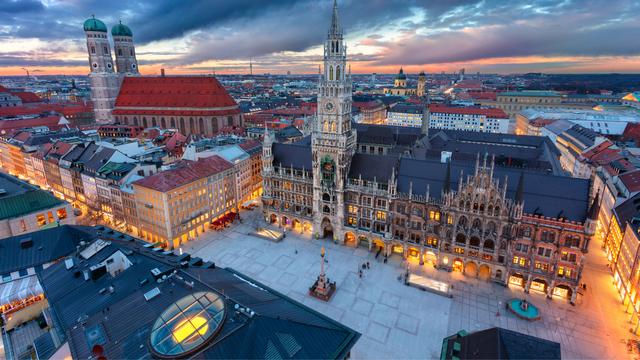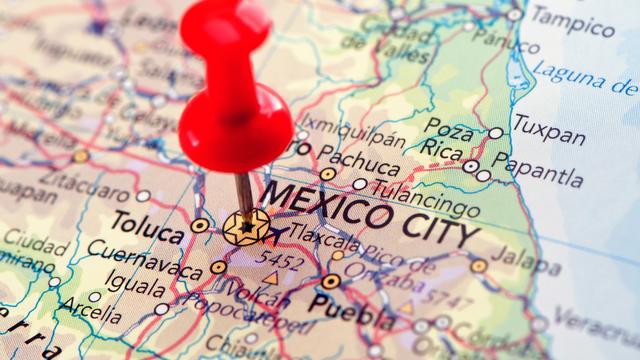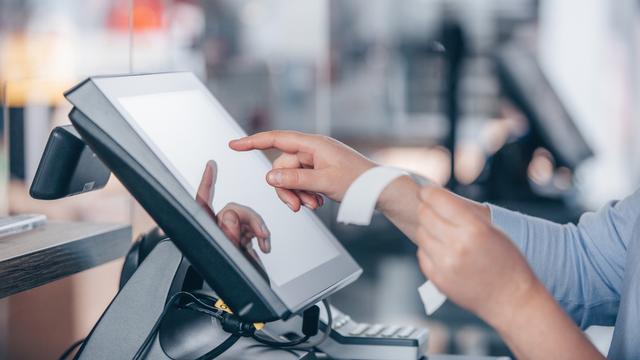Want to create an excellent floor plan for your restaurant?
Many crucial factors make a restaurant successful. A well-designed floor plan is definitely on that list.
This article will briefly talk about what a floor plan is and why you need to have it. Then, we will teach you how to design a restaurant floor plan using plenty of practical examples.
What Is A Restaurant Floor Plan?
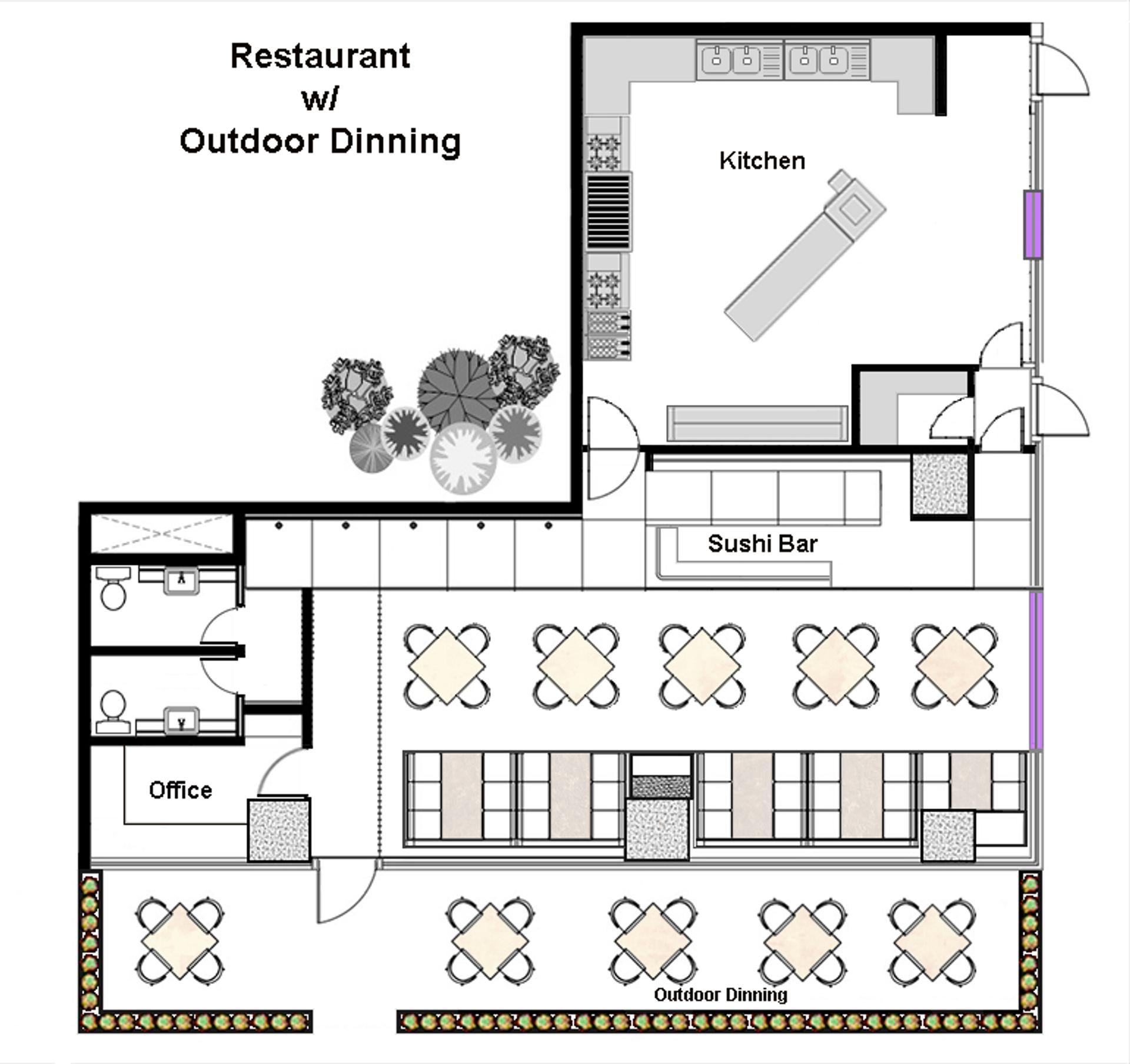
A restaurant floor plan is a map of rooms within your space accompanied by furniture and other elements. That includes the waiting area, dining area, kitchen, storage, restroom, bar, POS terminals, staff area, etc. The restaurant floor plan helps you put all elements in the correct order and maximize your space.
It’s essential to make the pathways for smooth movements of your staff members and your guests. Make table arrangements in a way that guests feel comfortable and have a sense of privacy.
Why is it important to have a floor plan?
The restaurant floor plan gives you an idea of your entire space. It can give you an idea of how to get the best usage of your space and also make pathways for easy movement of customers and employees. You can always change it when there is room for improvement.
Diners like privacy while dining and fewer tables around. While restaurateurs like more profit and more tables in the dining area. You can fix that problem by offering different types of seating areas.
Restaurant Layouts and Social Distancing Safety Guidelines (After Covid)
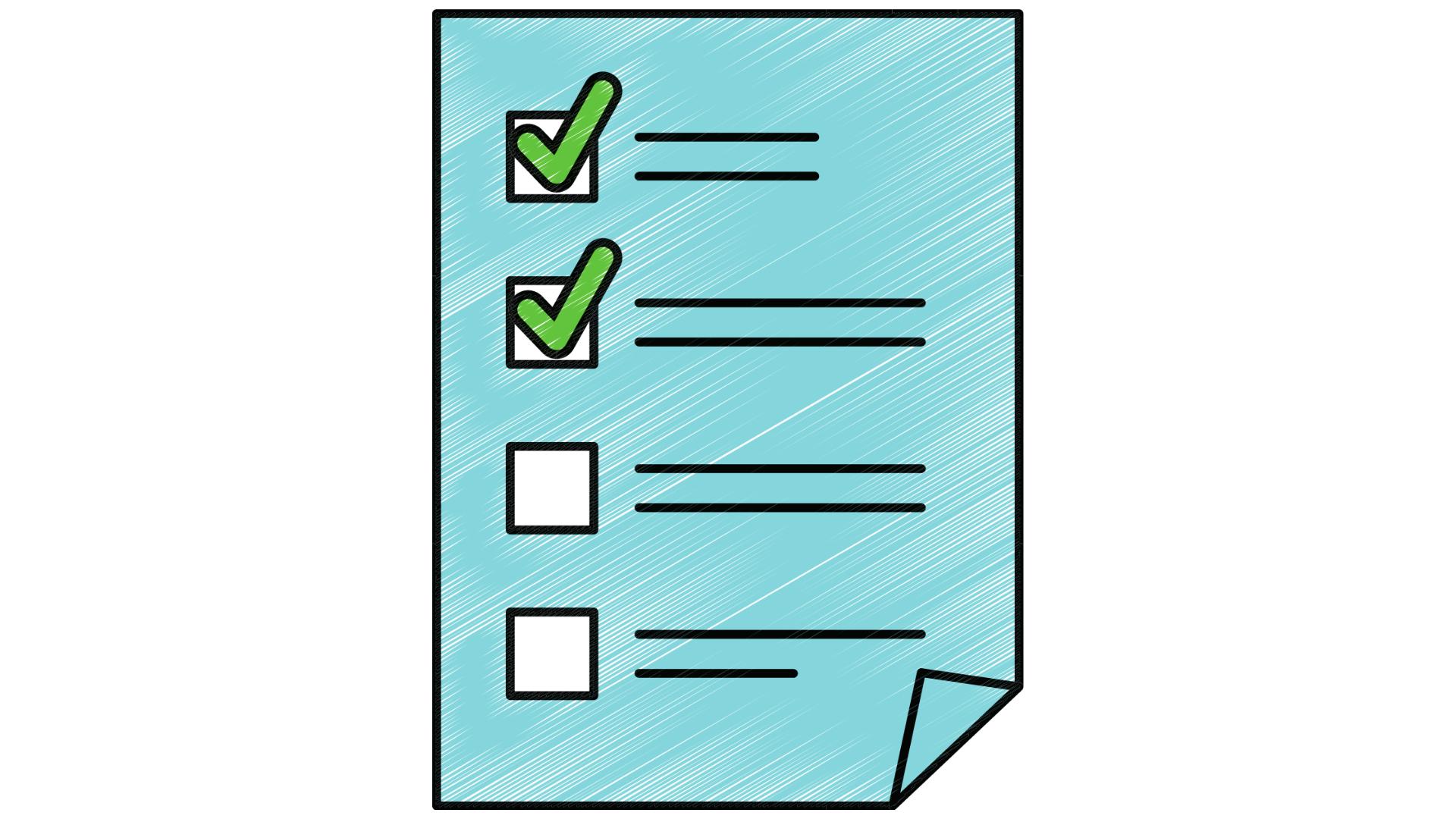
As Covid-19 has significantly affected restaurants, to help this industry survive, restaurateurs need to take some measures. Here are some essential steps:
- Restaurants must maintain distance between tables (usually about 6 feet)
- It would be best if you offered takeaway options
- Enable for guests to order food in advance to avoid waiting
- Consider using security measures like control barriers, tapes, etc.
- If possible, make barriers between tables when tables are too close
- Limit the number of people per table
- Offer outdoor seating
- Use credit cards rather than cash
- Provide a digital menu - scan the QR code (generated using an online QR Code Generator) to avoid menus that are touched hundreds of times during their lifetime.
(Tip: With a good POS system like Waiterio, your staff can take food orders directly from a tablet or smartphone. This will be a much safer option for your restaurant.)
3 Best Software To Create A Restaurant Floor Plan
Nowadays, when technology has evolved to make everything on your phone or computer, you don’t need expensive architects and planners to draw your restaurant floor plan.
You can just use some software, get creative and make changes to your restaurant floor plan as much as you wish. Here are some of the top programs you can use:
1. CAD PRO
It is used worldwide, with more than 2.5 million users, but it requires some skills and basic knowledge. It offers sample plans and many valuable free features, but the whole package subscription is 99.95$.
2. RoomSketcher
It is more user-friendly, and you don’t need any previous knowledge to start using this program. It has a base with many layouts, examples, 2D, 3D, and 360 degrees views, etc. It offers a free plan with some essential tools and subscribed plans at $49 or $99.
3. Smartdraw
It has plenty of templates that you can use to draw your restaurant floor plan. It is compatible with both Windows and Mac. SmartDraw offers a free trial and then it’s priced at $9.99 per month.
Restaurant Floor Plans With Examples
Depending on the size of your restaurant, the number of rooms and elements inside may vary. Here are some of our suggestions and examples on how to make the best out of your space.
1. The Dining Area
The dining room is the most critical part of the restaurant plan, and it should occupy most of the space in your restaurant (60% - 40% total restaurant space). The dining area earns money, so it needs to offer an excellent experience to your restaurant's guests. The other 40% is the BOH area; staff room, storage, and kitchen.
As mentioned, the distance between tables is important because people like privacy while dining. Lighting and music, colors of the walls and the furniture, comfortability of chairs - are the elements that affect the overall experience and ambiance.
Depending on your concept, you will arrange all those elements to fit well together and keep it that way; that will be your trademark. You can put a painting or a sign or decorate one wall to be unique and impressive. This way, people can take pictures of your restaurant and share them on social media. This will make your restaurant popular.
How big should the dining area be?
The shape and size of your chair and tables can affect the usage of space within your restaurant. However, you can mix different seating styles inside your restaurant to make the most out of the space you have.
Position your tables so that waiters can easily pass and approach each table without bothering the guests at the tables around. Have side tables in each area where your waiters can keep additional cutleries and plates temporarily. This is to avoid running around the dining area, which can cause discomfort for guests while eating.
It is good to have an isolated area for business people who like privacy. A couple of seating places at the bar are essential; some people like to sit just at the bar.
But the bar can be used as a waiting area as well. In that case, mix with tables for two, four, or six people. You can also place community tables that are becoming very popular. Suppose there is a wide range of seating spots; it will give guests various options where they feel comfortable sitting. Also, take people with disabilities into consideration when positioning your tables.
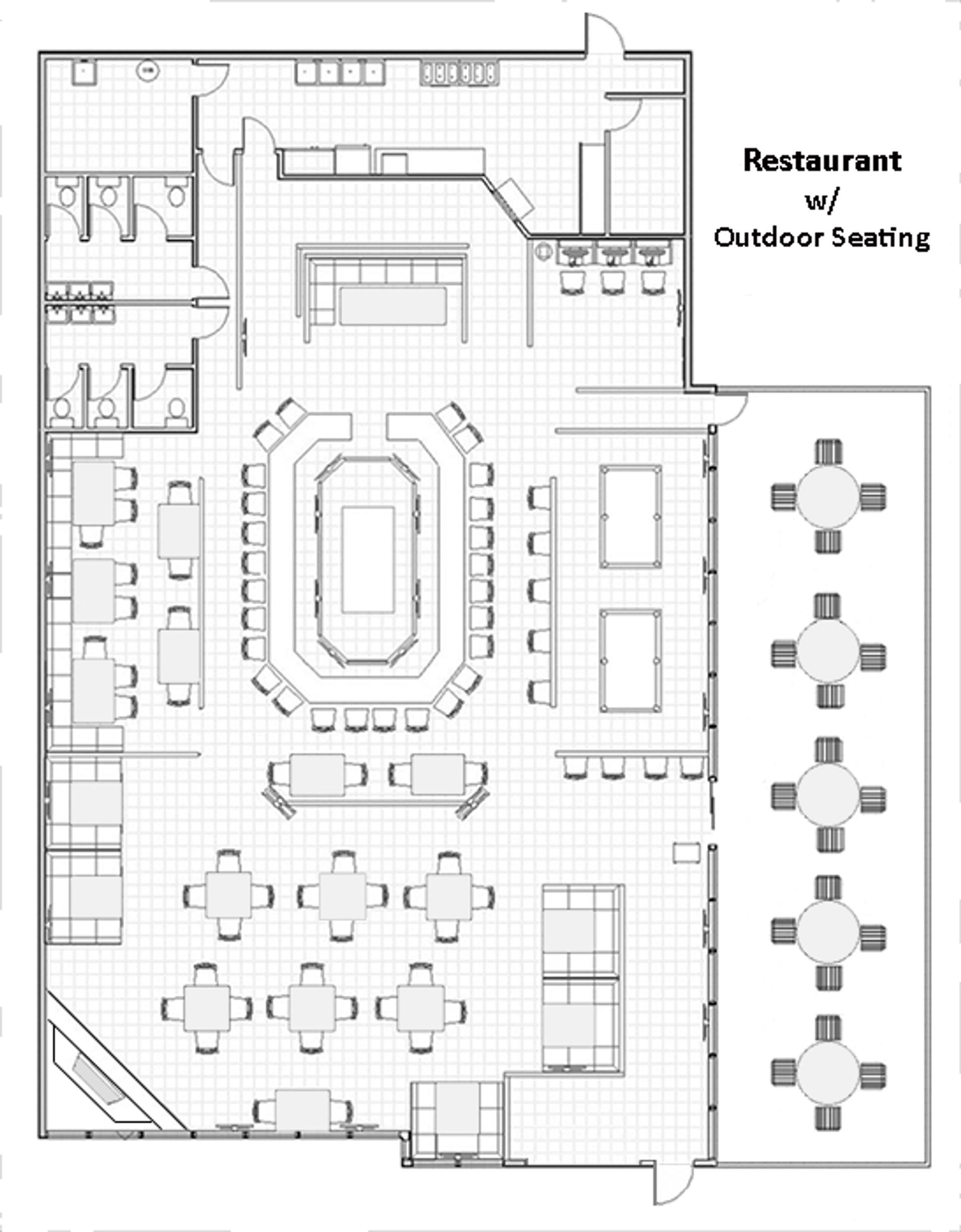
Image Credits: CAD PRO
2. The Restaurant Kitchen
Look at the flow of food and different stations in the kitchen. In a kitchen, you have a cooking area, inventory, and storage. The working or preparation station should be in the center, so the chefs and the staff can face each other.
This kind of arrangement will prevent the staff members from bumping into each other while working. In this way, the flow of food is smoother and more efficient. This minimizes the possibility of accidents inside the kitchen.
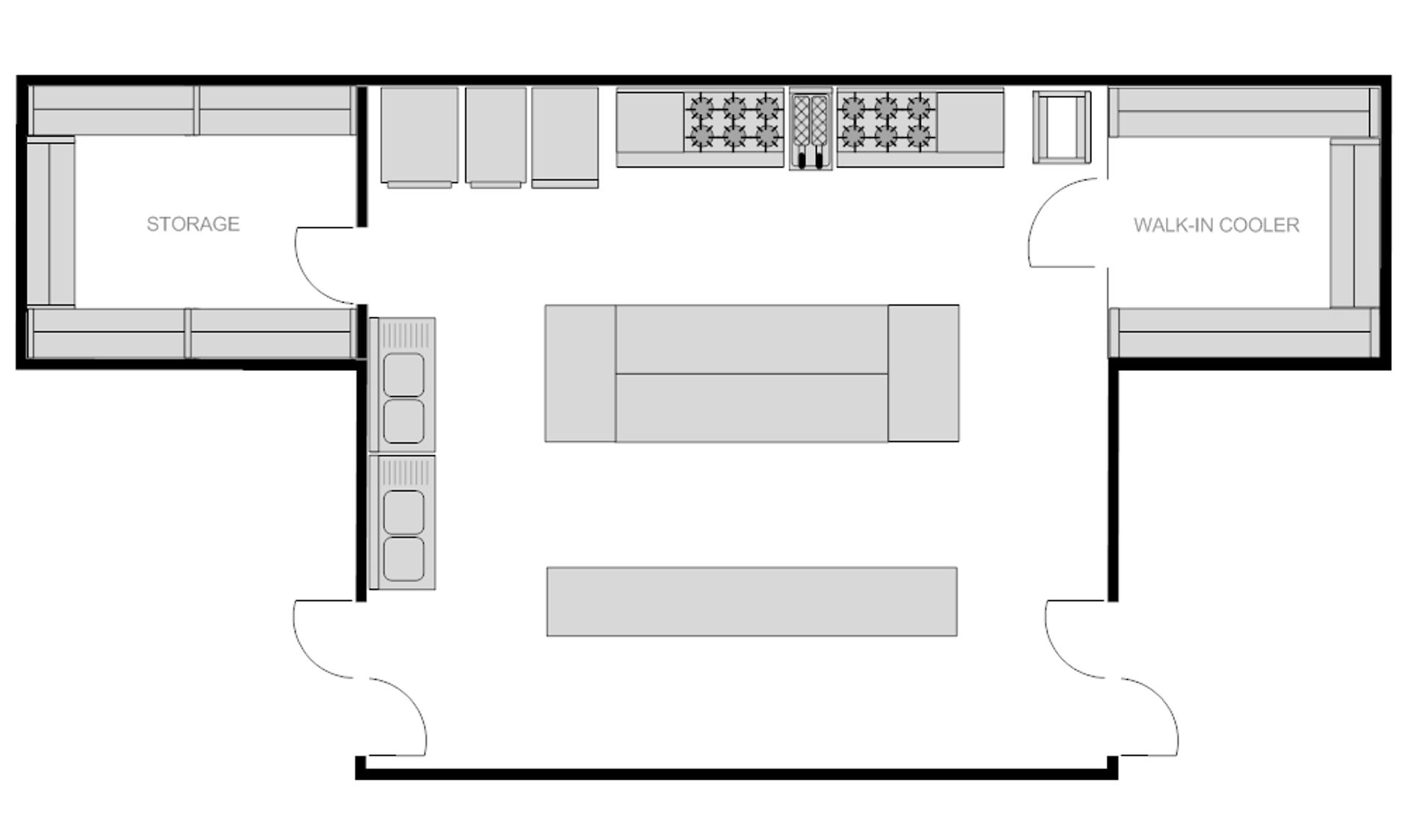
Image credits: smartdraw
3. The Waiting Area
While designing the restaurant floor plan, do not overlook the waiting area. The waiting room is where your guests are waiting before they can be seated at the restaurant. That is pretty uncomfortable and upsetting for the customers.
So the least you can do is provide them with comfortable chairs and bar tables instead of making them stand and block the way to the restaurant entrance. Another option besides the waiting area is to offer seats to your customers at the bar if there is enough space.
4. Outdoor Dining Area
A huge asset for a restaurant is to have an outdoor dining area. It is excellent for days when the weather is nice. It's also suitable for dealing with COVID19 issues and restrictions.
Your outdoor dining area should be an extension of your dining area inside to raise efficiency for the movements of the waiters. This also helps the waiters to have a clear overview of the outdoor area. The perfect scenario is to have a garden-oriented area; this is aesthetic and gives your diners some privacy and comfort. Except for garden maintenance, there is not much to do.
If your outdoor dining area faces the street, with a high frequency of traffic and people, some kind of barrier is needed to isolate the dining area from the outside rush.
You can do that by covering the area with glass or building some kind of platform with a fence around. You can also surround the dining area with some plants and vegetation to be high enough to block the street and isolate your diners from the busy street.
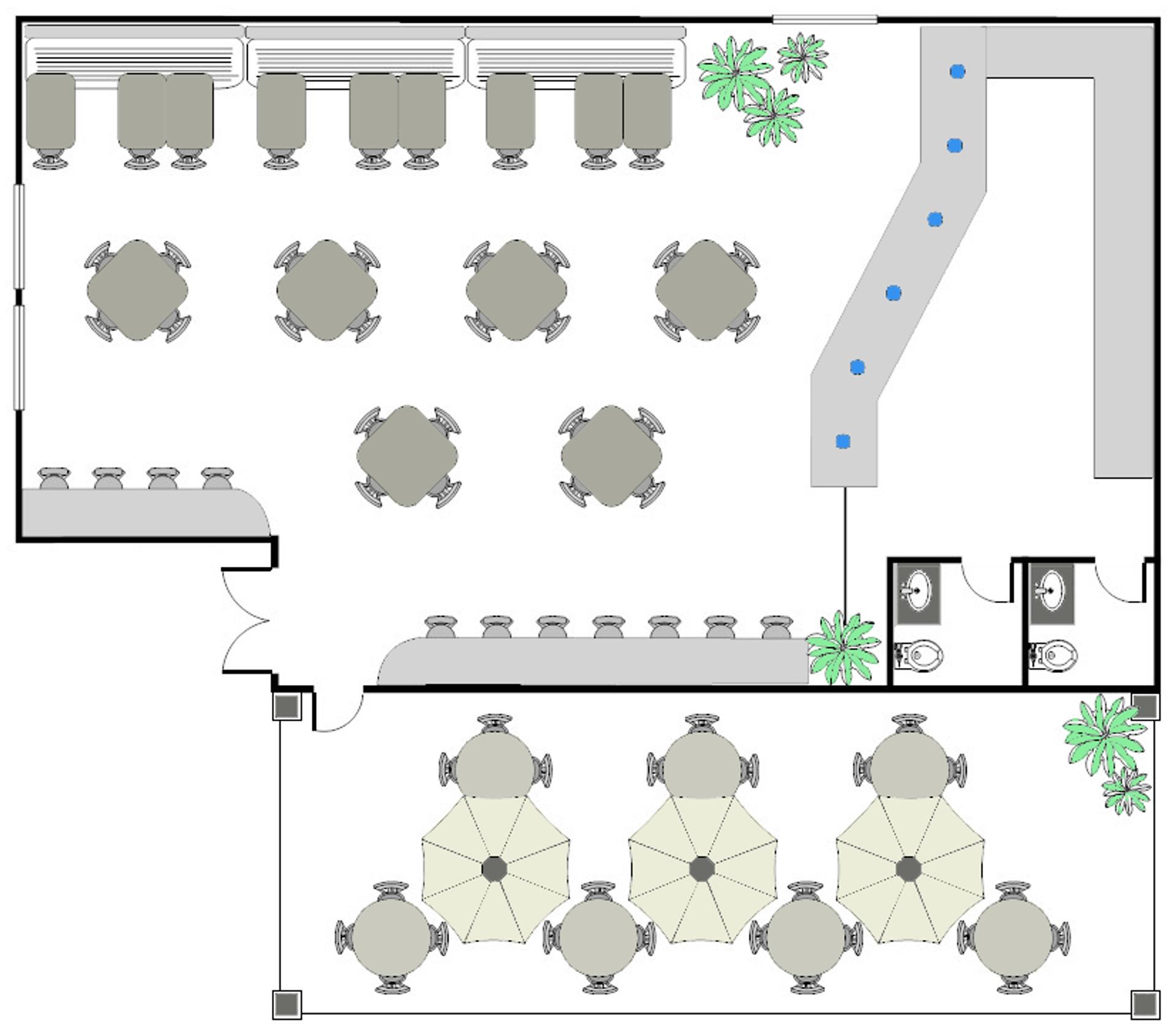
Image Credits: Cad Pro
5. Bar floor plan
When making a restaurant floor plan for the bar section, try to maximize the seating capacity for the bar as much as possible. As mentioned, some guests like to sit at the bar, but your bar can also interpret the waiting area if you don't have any.
Massive bars and comfortable bar stools give an excellent image and contribute to the relaxing atmosphere. The bar and the seating areas should be positioned so that the guests don't face the rest of the dining area.
The bar is an area that usually provides only drinks. Therefore the guests are often served just by the bartenders. There are cases where bars also serve food, but the waiters are concentrated just on the dining area in most cases.
Straight and squared bars may seem to use more space, but you can fully utilize them. In that case, you can place more seating places around the bar and have a bigger working space for bartenders inside the bar. While round bars may look more efficient, they take space and leave many empty and unusable rooms.

Image credits: Senaterace
6. Restroom Plan
Ensure that your restaurant plan has a clear position and signs to avoid your guests wandering around. In this way, they won't enter staff rooms or ask the waiters all the time. Restrooms have to be easily approachable from the dining area but still far enough from the dining area because nobody wants to sit next to the restroom. Avoid placing tables next to the entrance of the toilet.
Restrooms must be clean, well maintained, and divided for ladies and gentlemen; this has a considerable impact on the overall guest experience of the bathroom. Good maintenance and decent space in your restroom are a substantial advantage.
Offer complementary goods as shoe shine, pads, deodorants, sweets, or something that guests can serve themself; details are respected and impact the overall guest experience. Have one cabin for guests with disabilities.
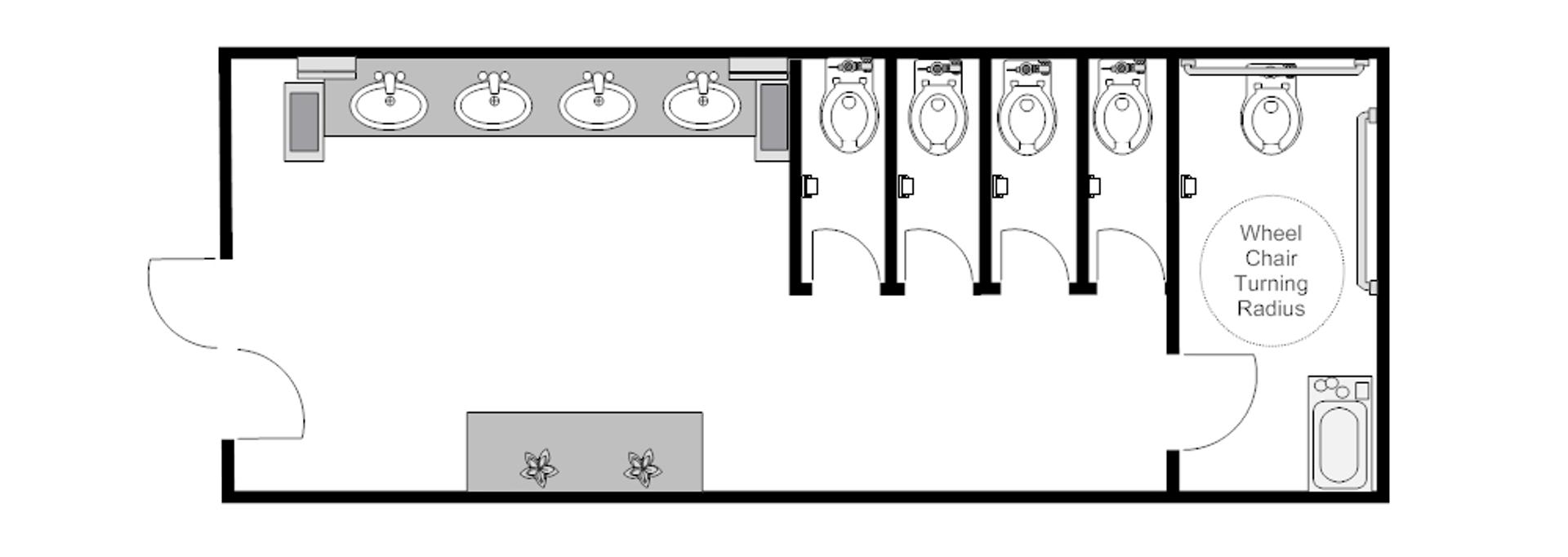
Image credits - smartdraw
7. The Entrance
The entrance is essential as it makes the first impression. Your entrance has to attract people, not just the ones who are purposely coming to your restaurant. Therefore, the front has to be authentic and eye-catching to attract people walking on the street.
Same as for the dining area, the entrance has to give a sense of clearness, calm and warm ambiance. Place a host to give each guest a warm welcome and escort them to the available tables.
The layout depends on the overall concept of your restaurant, but attractive and straightforward is what people like.
Put your menus in front of the entrance for potential visitors to show what you offer. That way, you make them stop for a while in front of your restaurant before deciding to walk in. If possible, place a host who can help them go through the menu and present the restaurant's offer, but only if they see interest by the potential customers for your restaurant.
Standing in front and "yelling" at guests to come to your restaurant can be pretty annoying and repulsive. It is commonly found in highly touristic areas, where all restaurants offer more or less the same.
Have a small reception area, where you can greet the guest and take their coat. The entrance has to be at the street level or one or two steps up to the main door. Entrances, where stairs lead down under the street level to basements, are not quite visible and accessible.
8. Emergency Exits
While planning emergency exits on your restaurant floor plan, map all the exits that you have. Then you have to make them visible to all. During the evacuation process, exit signs are a great help to empty the restaurant fast and efficiently.
Usually, these emergency exits are not used at all, so employees use them for other purposes, and that way, they might block those exits. Be sure to make them clear and passable. Each room inside the restaurant should have an emergency exit to avoid anyone getting trapped during an accident. Also, each room should have a fire extinguisher.
Whether the exit is a window or door, each room needs one. Train your employees for emergencies and organize fire drills so they can prepare themselves for such situations.
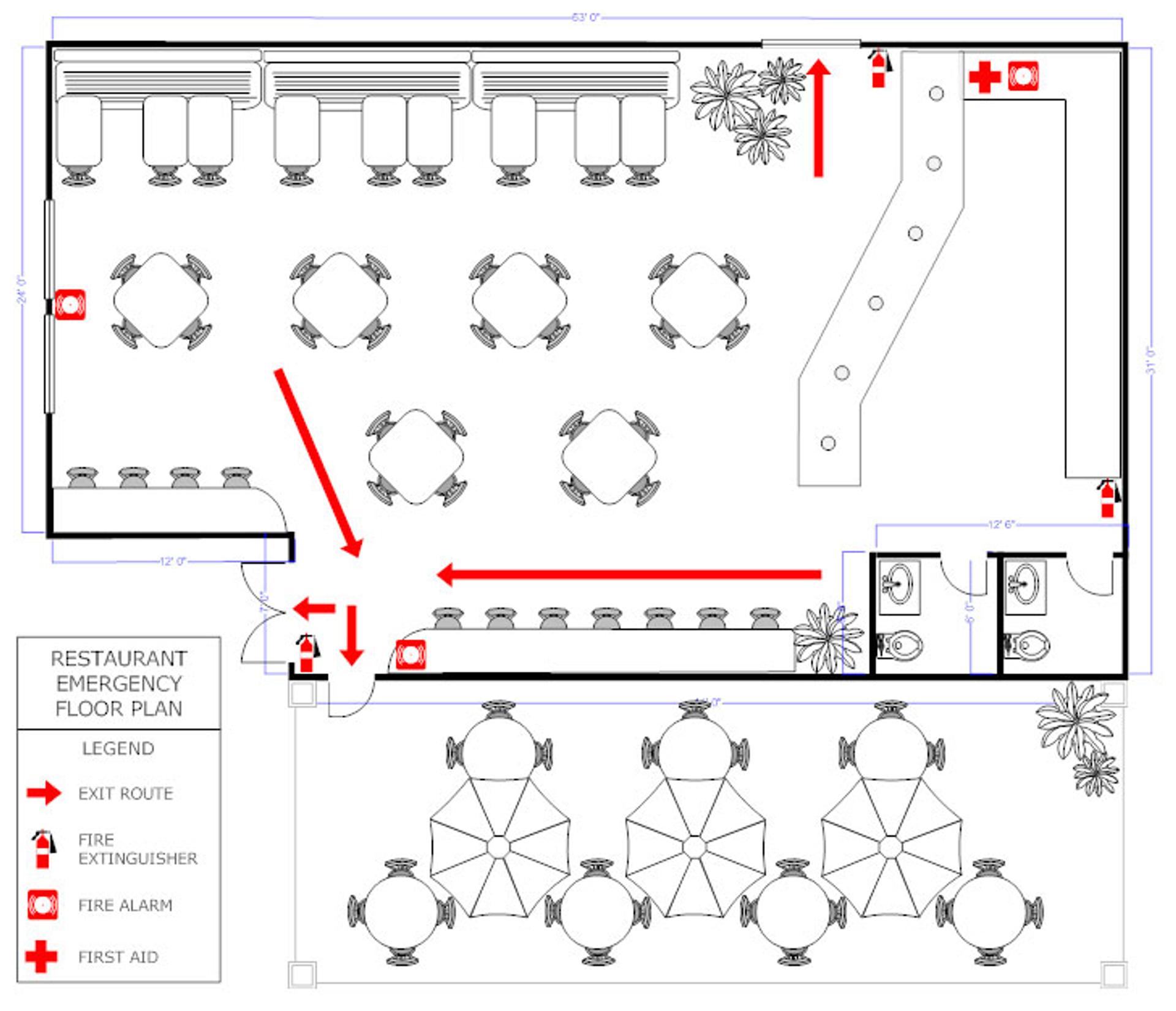
Image credits: smartdraw
9. Staff Room/Private Rooms
While making a restaurant floor plan, make sure to group all the private areas. Usually, the staff room will be next to the kitchen area or the office. Ensure that you have enough space for your staff to be able to rest during breaks.
Floor Plans For Small Restaurants
You need to be creative in a lack of space and drag the center of attention from your imperfections to your strengths - creativity and what you offer. Restaurants require a lot of different rooms and elements. However, you can combine some rooms and organize some rooms to save space.
If the space is small, make sure ceilings are high because it makes the room look visually larger and more comfortable.
Here are some examples of creative small restaurant designs:
- https://www.reddit.com/r/Design/comments/kwz6se/stacked_seating_at_a_restaurant/
- https://www.dominionprint.com/5-small-restaurant-floor-plan-examples-thatll-wow-your-customers/
- https://pinterest.com/pin/294704369358244887/
- https://pinterest.com/pin/540572761525537986/
Here an example of a floor plan for a small restaurant:
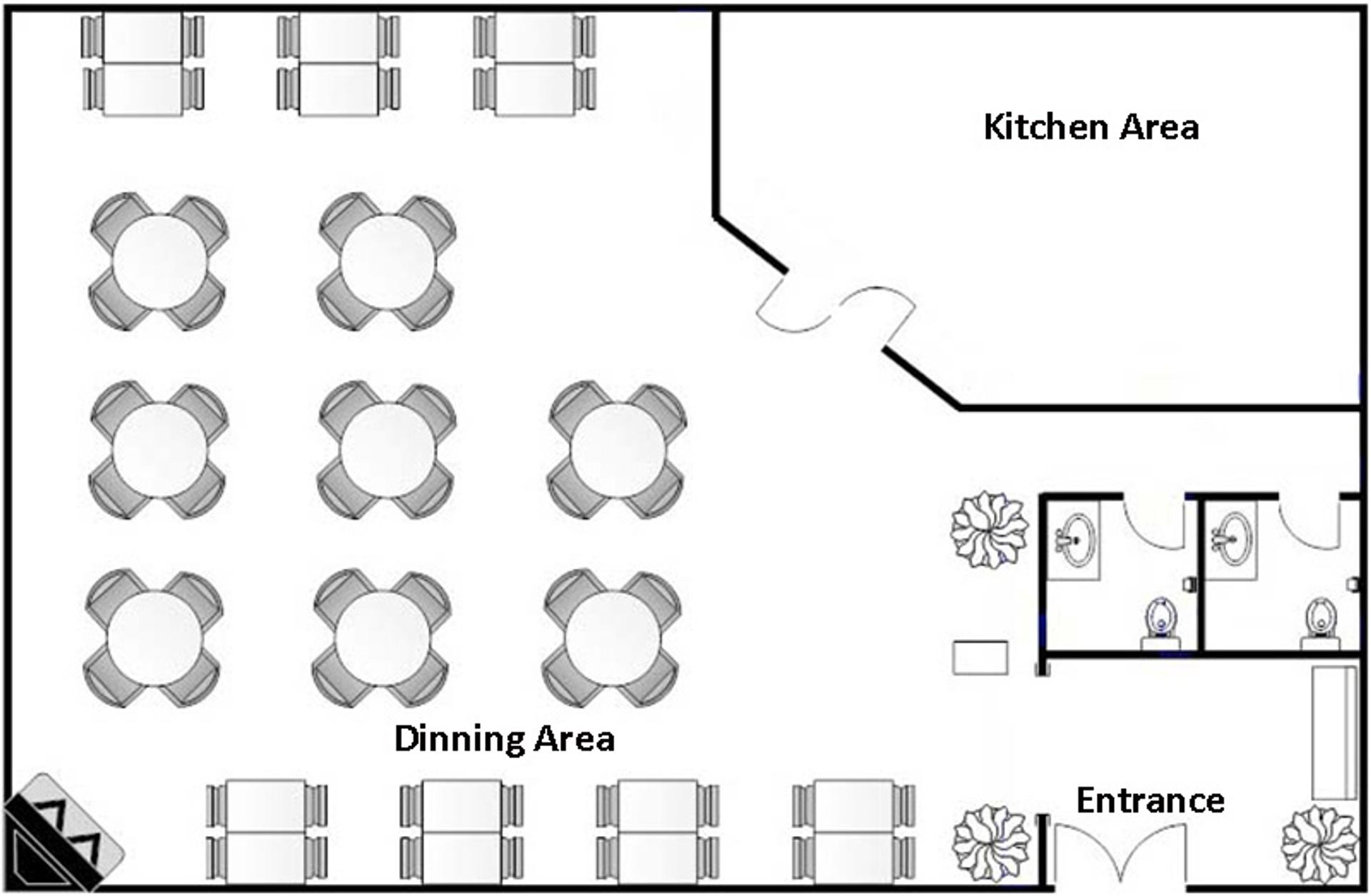
Image credit: CAD PRO
6 Tips for Designing Your Restaurant Floor Plan Layout
Designing a restaurant floor plan is not easy, especially if you are starting from the very beginning. There are so many things that you need to do, and you will have a feeling that you don’t know where to start. It is a hard process that takes a lot of organization and time; however, here are some tips that might help you during that process.
- 60:40 rule for space: Front-of-house (FOH) staff should ideally be 60% of the space of your restaurant, and back of the house should be 40%
- Know about government rules: Before creating a restaurant plan, make sure to check with the local government all requirements because in some cases, you need to get a permit and submit the plan.
- Make long-term plans: While designing your restaurant, you should consider your short and long-term plans. Materials you want to use, renovations you might have in the future. Would you invest in the best material and avoid future repairs, or would you build your restaurant step by step as you work and make a profit?
- Understand your restaurant from a customer’s point of view: Create a great experience for your guests, but keep your focus on efficiency and lower the costs. During the designing process, put yourself in your guest’s shoes and look at your space from the eyes of the guest to see what is missing or what can be improved.
- Efficiency is crucial: Efficient workflow is important to enable your serving staff a clear path from the dining area to the kitchen. Functionality should be preferred over aesthetics.
- Accessibility: Make a restaurant accessible to each of your guests. Add space for wheelchairs beside your stairs.
![How To Design A Restaurant Floor Plan [Examples & Tips]](https://www.imagelato.com/images/article-cover-restaurant-floor-plan-1a89418b-1024w.jpg)

